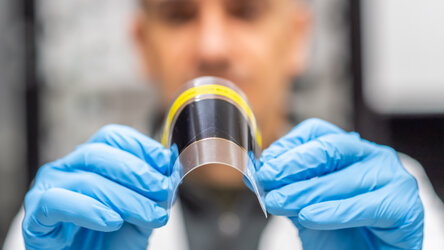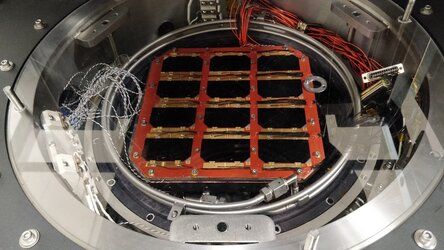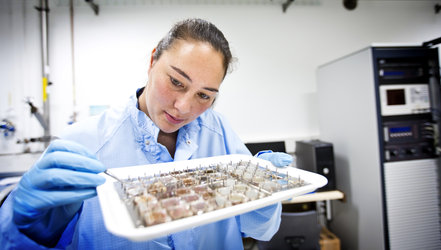Accept all cookies Accept only essential cookies See our Cookie Notice

About ESA
The European Space Agency (ESA) is Europe’s gateway to space. Its mission is to shape the development of Europe’s space capability and ensure that investment in space continues to deliver benefits to the citizens of Europe and the world.
Highlights
ESA - United space in Europe
This is ESA ESA facts Member States & Cooperating States Funding Director General Top management For Member State Delegations European vision European Space Policy ESA & EU Space Councils Responsibility & Sustainability Annual Report Calendar of meetings Corporate newsEstablishments & sites
ESA Headquarters ESA ESTEC ESA ESOC ESA ESRIN ESA EAC ESA ESAC Europe's Spaceport ESA ESEC ESA ECSAT Brussels Office Washington OfficeWorking with ESA
Business with ESA ESA Commercialisation Gateway Law at ESA Careers Cyber resilience at ESA IT at ESA Newsroom Partnerships Merchandising Licence Education Open Space Innovation Platform Integrity and Reporting Administrative Tribunal Health and SafetyMore about ESA
History ESA Historical Archives Exhibitions Publications Art & Culture ESA Merchandise Kids Diversity ESA Brand CentreLatest
Space in Member States
Find out more about space activities in our 23 Member States, and understand how ESA works together with their national agencies, institutions and organisations.
Science & Exploration
Exploring our Solar System and unlocking the secrets of the Universe
Go to topicAstronauts
Missions
Juice Euclid Webb Solar Orbiter BepiColombo Gaia ExoMars Cheops Exoplanet missions More missionsActivities
International Space Station Orion service module Gateway Concordia Caves & Pangaea BenefitsLatest
Space Safety
Protecting life and infrastructure on Earth and in orbit
Go to topicAsteroids
Asteroids and Planetary Defence Asteroid danger explained Flyeye telescope: asteroid detection Hera mission: asteroid deflection Near-Earth Object Coordination CentreSpace junk
About space debris Space debris by the numbers Space Environment Report In space refuelling, refurbishing and removingSafety from space
Clean Space ecodesign Zero Debris Technologies Space for Earth Supporting Sustainable DevelopmentLatest
Applications
Using space to benefit citizens and meet future challenges on Earth
Go to topicObserving the Earth
Observing the Earth Future EO Copernicus Meteorology Space for our climate Satellite missionsCommercialisation
ESA Commercialisation Gateway Open Space Innovation Platform Business Incubation ESA Space SolutionsLatest
Enabling & Support
Making space accessible and developing the technologies for the future
Go to topicBuilding missions
Space Engineering and Technology Test centre Laboratories Concurrent Design Facility Preparing for the future Shaping the Future Discovery and Preparation Advanced Concepts TeamSpace transportation
Space Transportation Ariane Vega Space Rider Future space transportation Boost! Europe's Spaceport Launches from Europe's Spaceport from 2012Latest

Glowing solar cell
Thank you for liking
You have already liked this page, you can only like it once!
A solar cell is being turned into a light source by running electric current through it. Such ‘luminescence’ testing is performed routinely in ESA’s Solar Generator Laboratory, employed to detect cell defects – such as the cracks highlighted here.
By happy accident the solar (or ‘photovoltaic’) cell was invented in 1954, just before the start of the Space Age, allowing satellites to run off the abundant sunshine found in Earth orbit and beyond.
Made from the same kind of semiconductor materials as computer circuits, solar cells are designed so that incoming sunlight generates an electric current. But the process can be reversed for test purposes: apply an electric charge and a solar cell will glow.
Solar cells, carefully assembled together into arrays, are an essential part of space missions, together with specially-designed batteries for times when a satellite needs more power, passes into darkness or faces a power emergency – plus the power conditioning and distribution electronics keeping all parts of a mission supplied with the power they require.
“Space power technologies are second only to launchers in ensuring European competitiveness and non-dependence,” comments Véronique Ferlet-Cavrois, Head of ESA’s Power Systems, EMC & Space Environment Division.
“Without the research and development ESA performs with European industry to ensure the continued availability of high-performance space power systems and components we would be left utterly reliant on foreign suppliers, or missions wouldn’t fly at all. We will be taking a look back at the important work done during the last three decades during this month’s European Space Power Conference.”
The 12th European Space Power Conference (ESPC) is taking take place in Juan-les-Pins, Côte d'Azur, France, from 30 September to 4 October, with almost 400 participants. Véronique is chairing the event.
“It will begin 30 years to the week from the very first conference in the series,” adds ESA power conditioning engineer Mariel Triggianese, ESPC’s technical coordinator.
“So we’ll be commemorating our past but also looking forward. Our theme is ‘Space Power, Achievements and Challenges’. The chief technology officers from Airbus, Thales, Ariane Group and OHB will be joined by ESA’s Director of Technology Engineering and Quality, Franco Ongaro, to discuss the space power needs of their markets into the future.”
-
CREDIT
ESA–SJM Photography -
LICENCE
ESA Standard Licence

Bendy, ultra-thin solar cell

30% efficient multi-junction solar cell

Solar cell system

Testing adhesives for solar cells















 Germany
Germany
 Austria
Austria
 Belgium
Belgium
 Denmark
Denmark
 Spain
Spain
 Estonia
Estonia
 Finland
Finland
 France
France
 Greece
Greece
 Hungary
Hungary
 Ireland
Ireland
 Italy
Italy
 Luxembourg
Luxembourg
 Norway
Norway
 The Netherlands
The Netherlands
 Poland
Poland
 Portugal
Portugal
 Czechia
Czechia
 Romania
Romania
 United Kingdom
United Kingdom
 Slovenia
Slovenia
 Sweden
Sweden
 Switzerland
Switzerland























